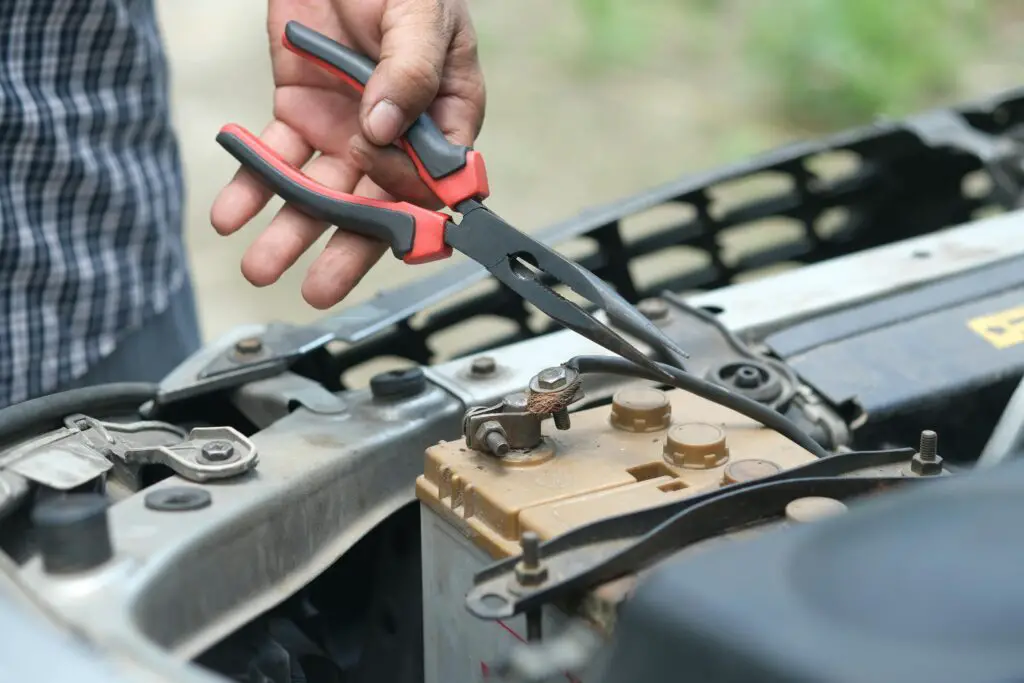Looking for how to fix a dead car battery in quick and 5 easy steps? Dead car battery, is one of the most common reasons cars fail to start, but the good news is that it’s often fixable. Whether stranded in a parking lot or dealing with an aging battery at home, this guide will walk you through the steps to troubleshoot and revive your car battery.
Understanding the Problem: Why Do Batteries Die?
Car batteries can die for several reasons, including:
- Leaving the lights or accessories on for an extended period.
- Extreme temperatures affecting the battery’s performance.
- Aging or worn-out batteries losing their ability to hold a charge.
- Faulty charging systems failing to recharge the battery properly.
Identifying the root cause is critical to ensuring the problem doesn’t recur after you revive the battery.
Tools You’ll Need
Before you start, gather the following tools and supplies to ensure a smooth process:
- Jumper cables or a jump starter.
- Safety gloves and goggles.
- A wrench (for battery terminals).
- A battery charger or trickle charger (optional for slow recharging).
- Baking soda, water, and a brush (for cleaning terminals).
- A multimeter (optional for testing battery voltage).
Step 1: Ensure Safety First
Working with car batteries can be hazardous due to electrical currents and acid. Follow these safety precautions:
- Wear gloves and goggles.
- Ensure the car is turned off, and the keys are removed.
- Work in a well-ventilated area.
- Avoid smoking or creating sparks near the battery.
Step 2: Inspect the Battery
A quick inspection can reveal whether the battery is salvageable or needs replacement:
- Check for Corrosion:
Look for white or greenish buildup on the battery terminals. This can interfere with the connection and prevent proper charging.
Solution: Clean the terminals using a brush and a paste made of baking soda and water. - Inspect for Damage:
Cracks, leaks, or bulging indicate the battery is damaged and should be replaced immediately.
Step 3: Jump-Start the Battery
A quick and effective way to fix a dead battery is by jump-starting it. Here’s how:
- Position the Cars or Jumper Starter:
If using another car, park it close enough for the jumper cables to reach but ensure the vehicles don’t touch. - Connect the Jumper Cables:
- Attach the red clamp to the positive terminal of the dead battery.
- Attach the other red clamp to the positive terminal of the working battery.
- Attach the black clamp to the negative terminal of the working battery.
- Attach the other black clamp to an unpainted metal surface on the dead car (not the negative terminal) to ground the connection.
- Start the Working Car:
Let it run for a few minutes. - Start the Dead Car:
If it starts, leave it running for at least 15-20 minutes to recharge the battery. - Remove the Jumper Cables:
Remove them in reverse order and ensure no clamps touch during the process.

Step 4: Charge the Battery
If you have a battery charger or trickle charger, connect it to the battery and let it charge fully. This is a more thorough way to revive a dead battery and is especially useful for batteries that lose power gradually.
Step 5: Test the Battery
After the battery is charged, use a multimeter to check its voltage. A fully charged car battery should read around 12.6 volts when the car is off. If the voltage is below this or the battery continues to drain, it may need to be replaced.
When to Replace Your Battery
If your battery:
- Dies repeatedly despite being jump-started or charged.
- Shows physical damage like cracks or leaks.
- Is over 3-5 years old (most batteries have a limited lifespan).
It’s time for a replacement. Be sure to choose a battery compatible with your car’s make and model.
Preventing a Dead Battery
- Turn Off Lights and Accessories: Always double-check that lights and electronics are off when exiting the vehicle.
- Maintain Your Battery: Clean terminals regularly and test the battery periodically.
- Drive Regularly: Short trips can prevent the alternator from fully recharging the battery. Take occasional longer drives to maintain battery health.
Final Thoughts
A dead car battery doesn’t have to ruin your day. By following these steps, you can safely and effectively revive most batteries and get back on the road. However, if the battery continues to fail or shows signs of damage, it’s best to replace it to avoid further inconvenience.
Would you like tips on choosing the right replacement battery or additional troubleshooting advice? Let me know!
Discover more from Chikwem
Subscribe to get the latest posts sent to your email.